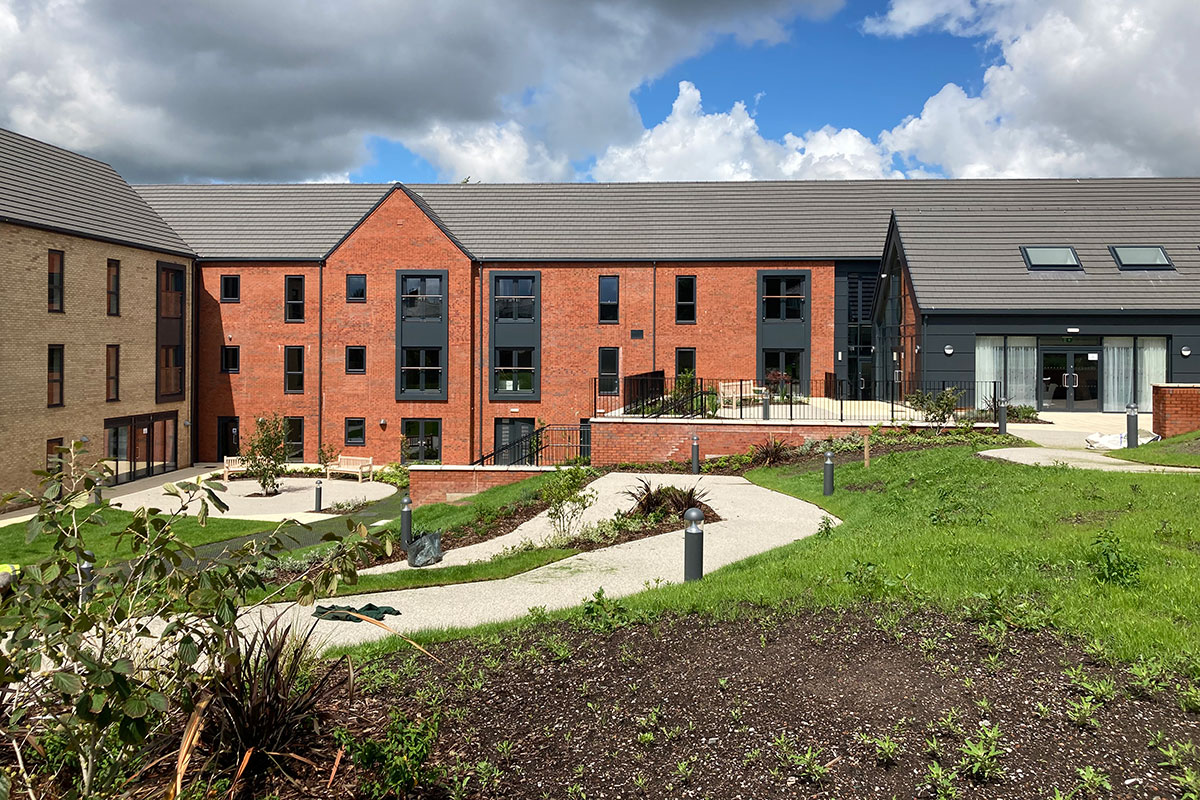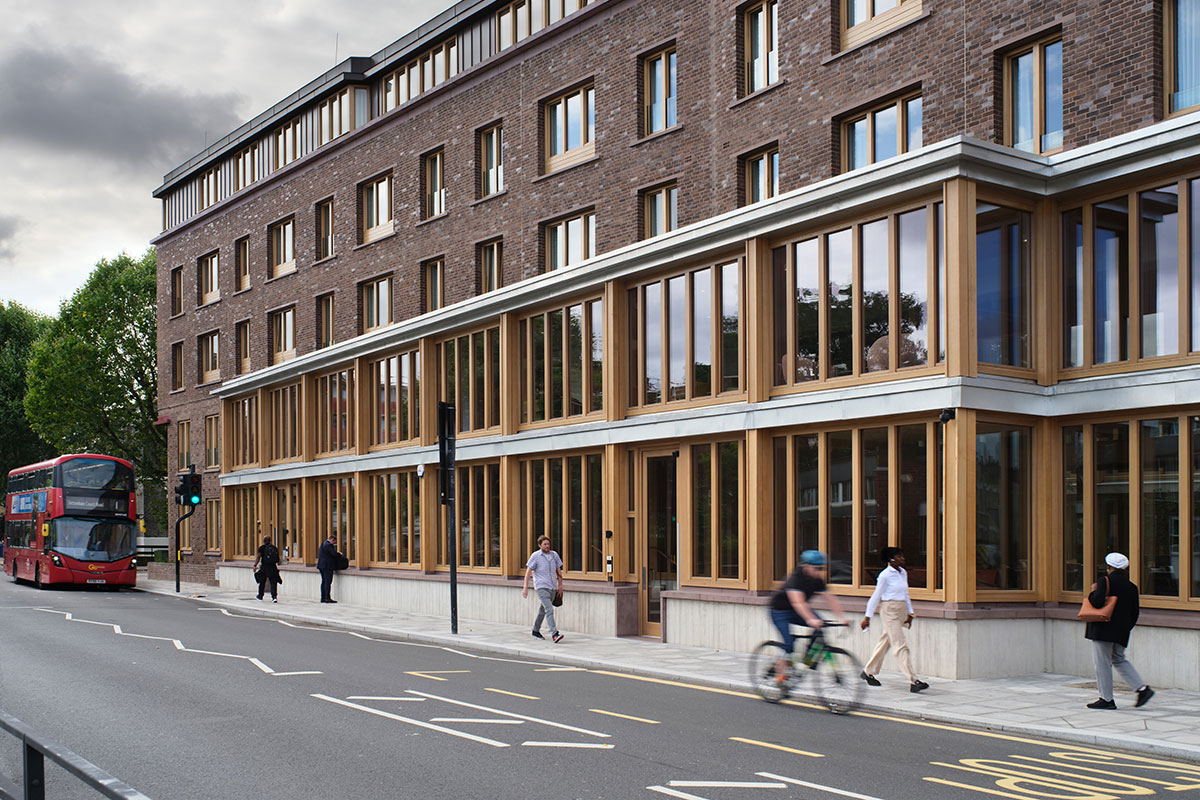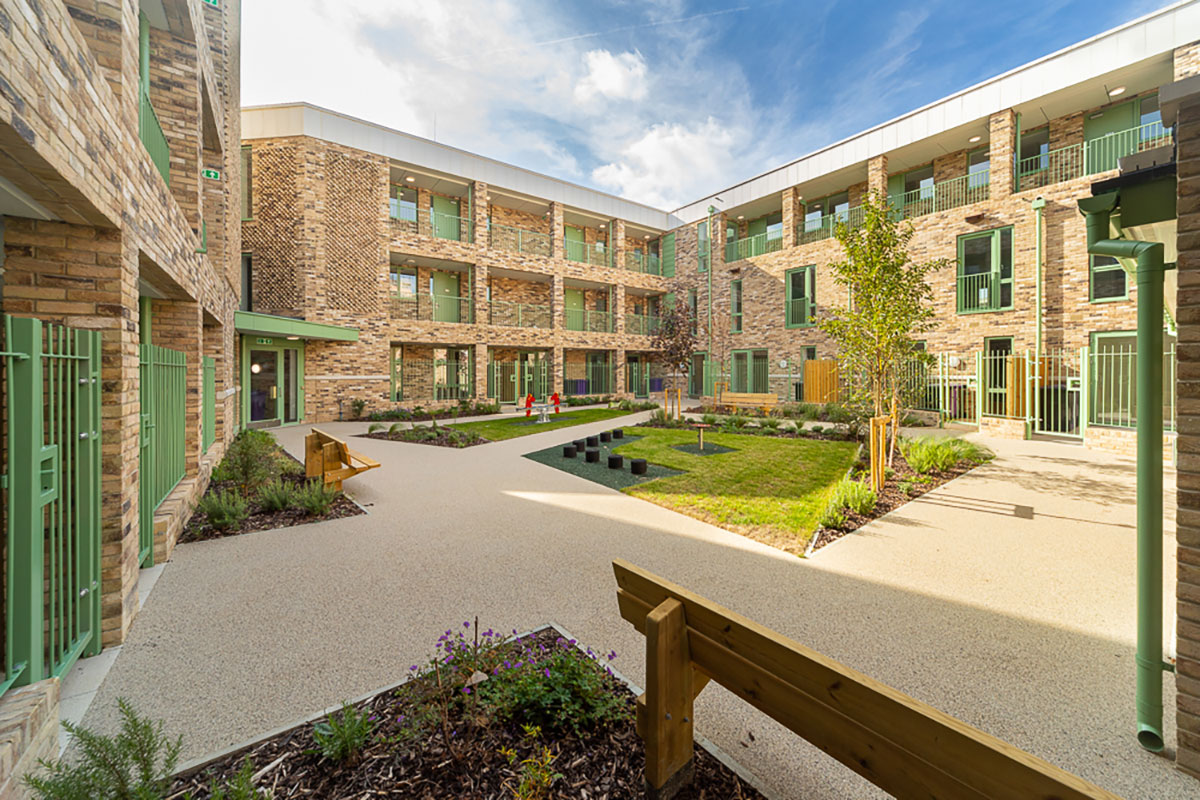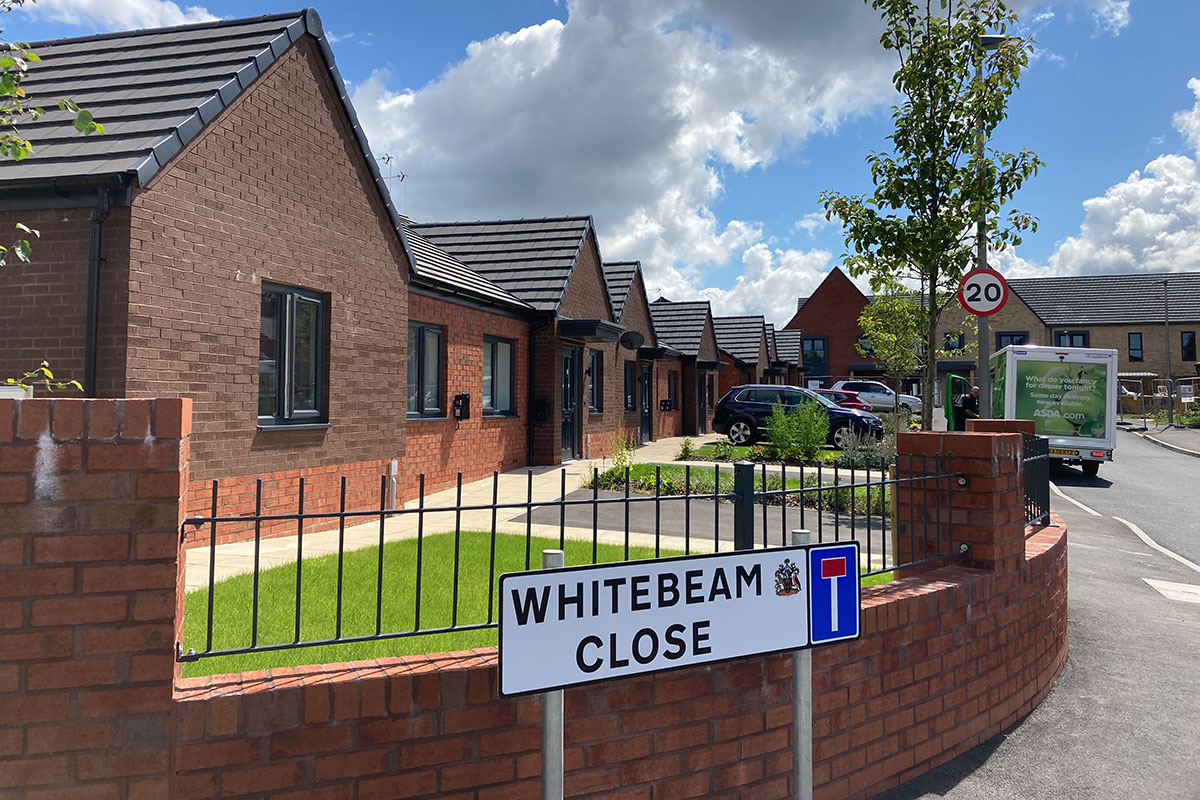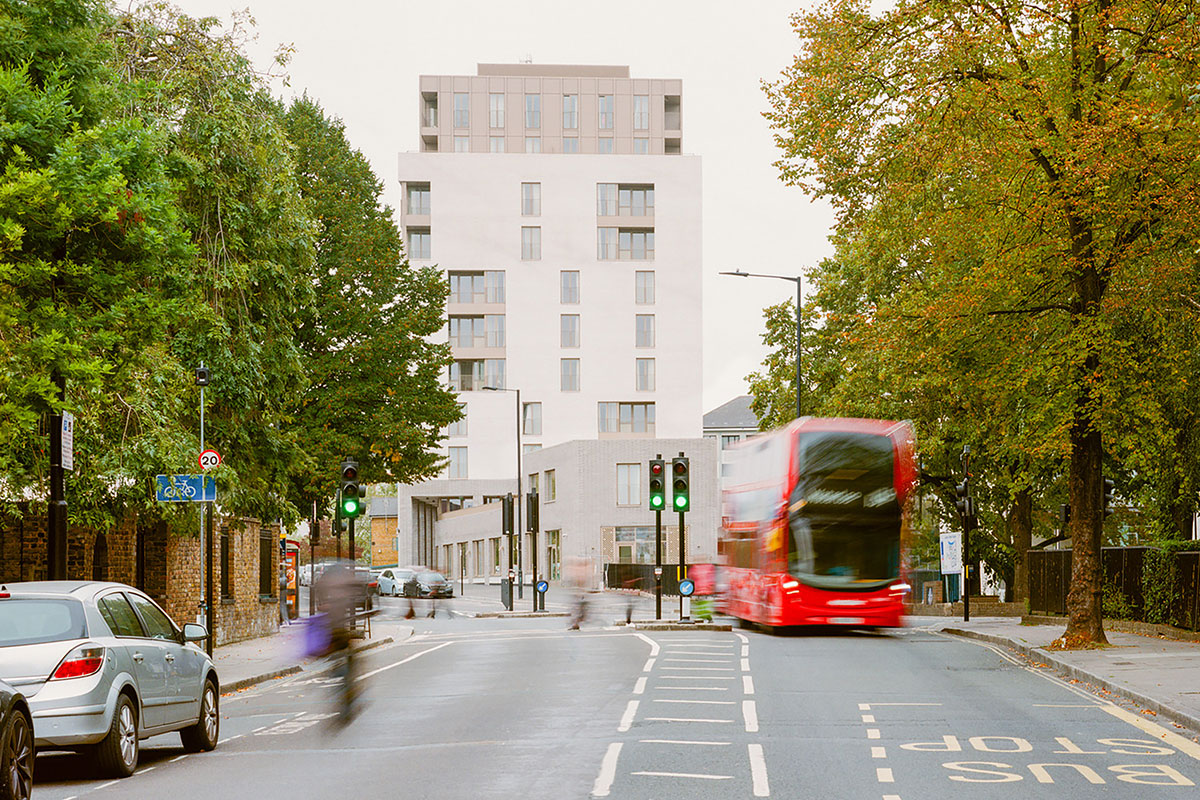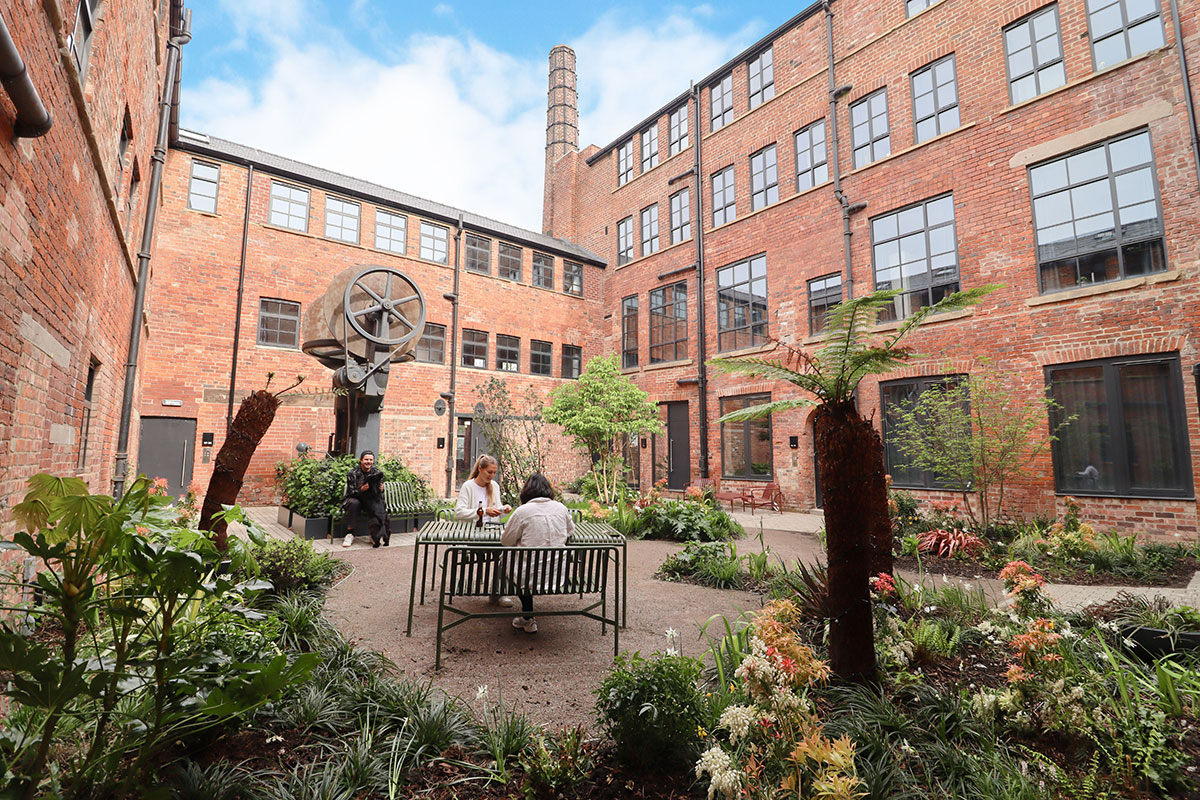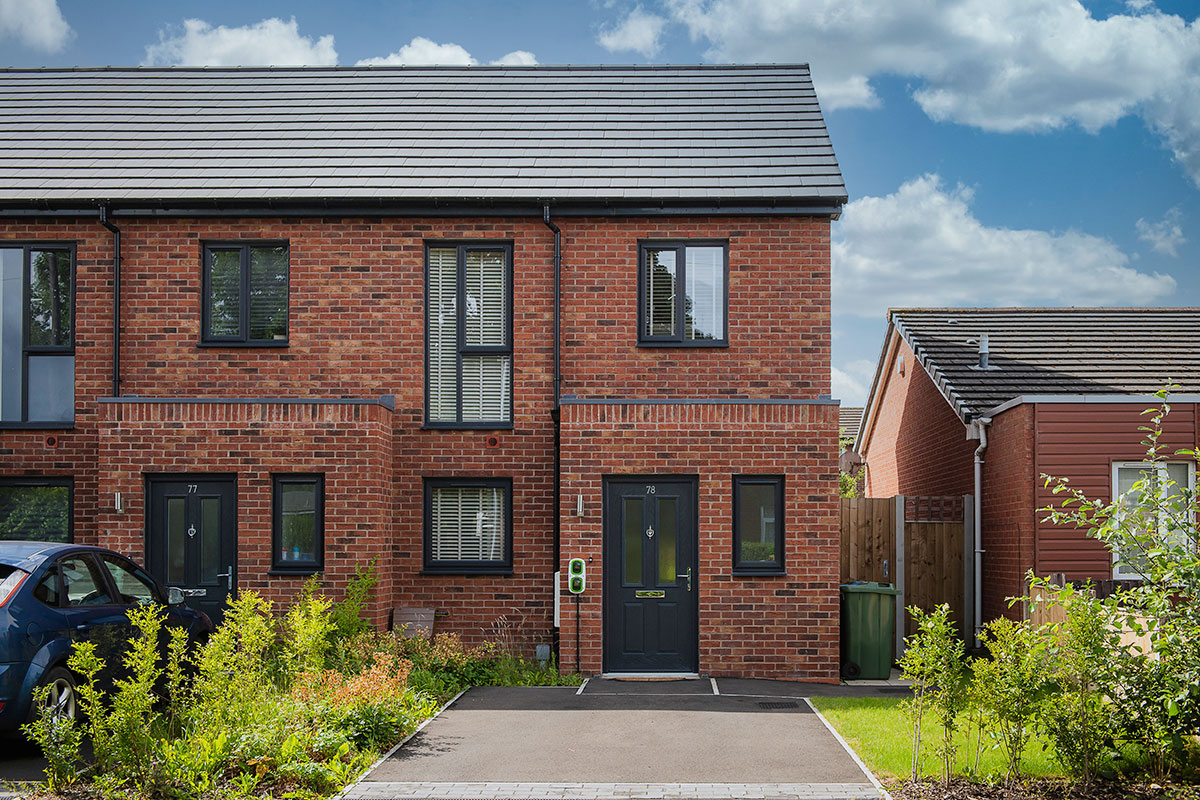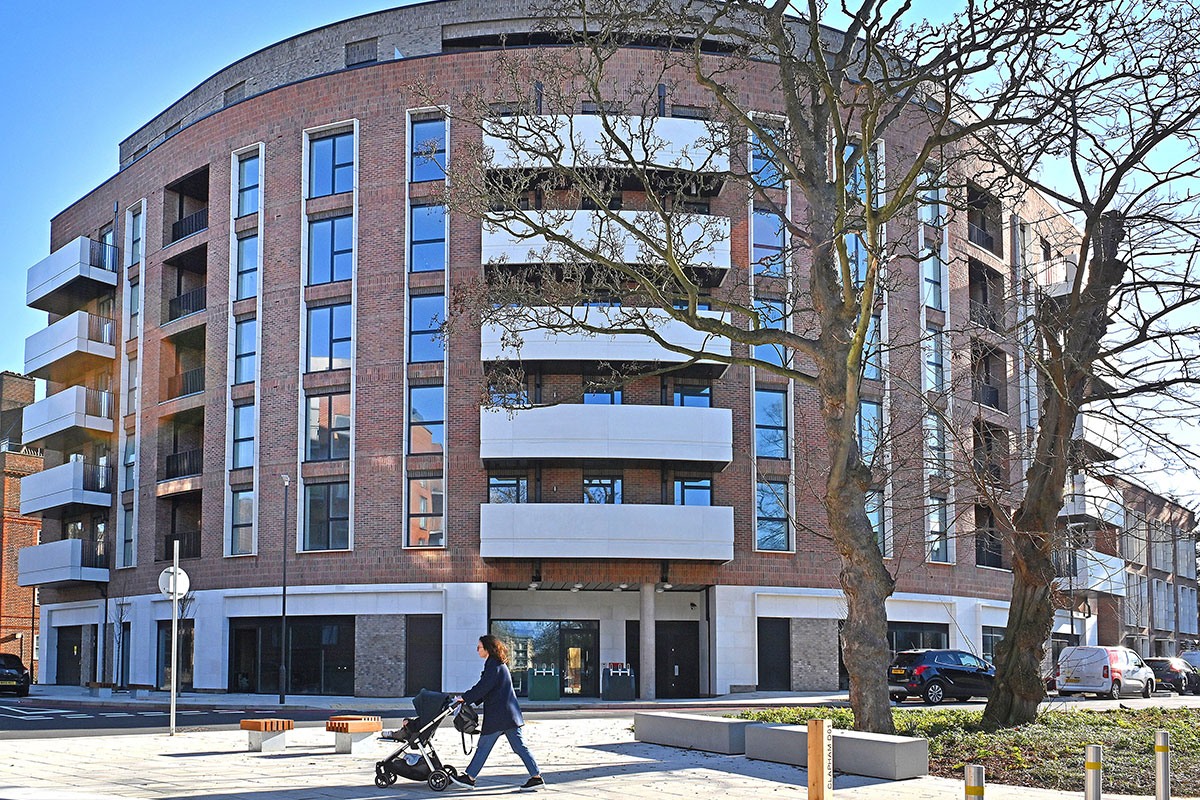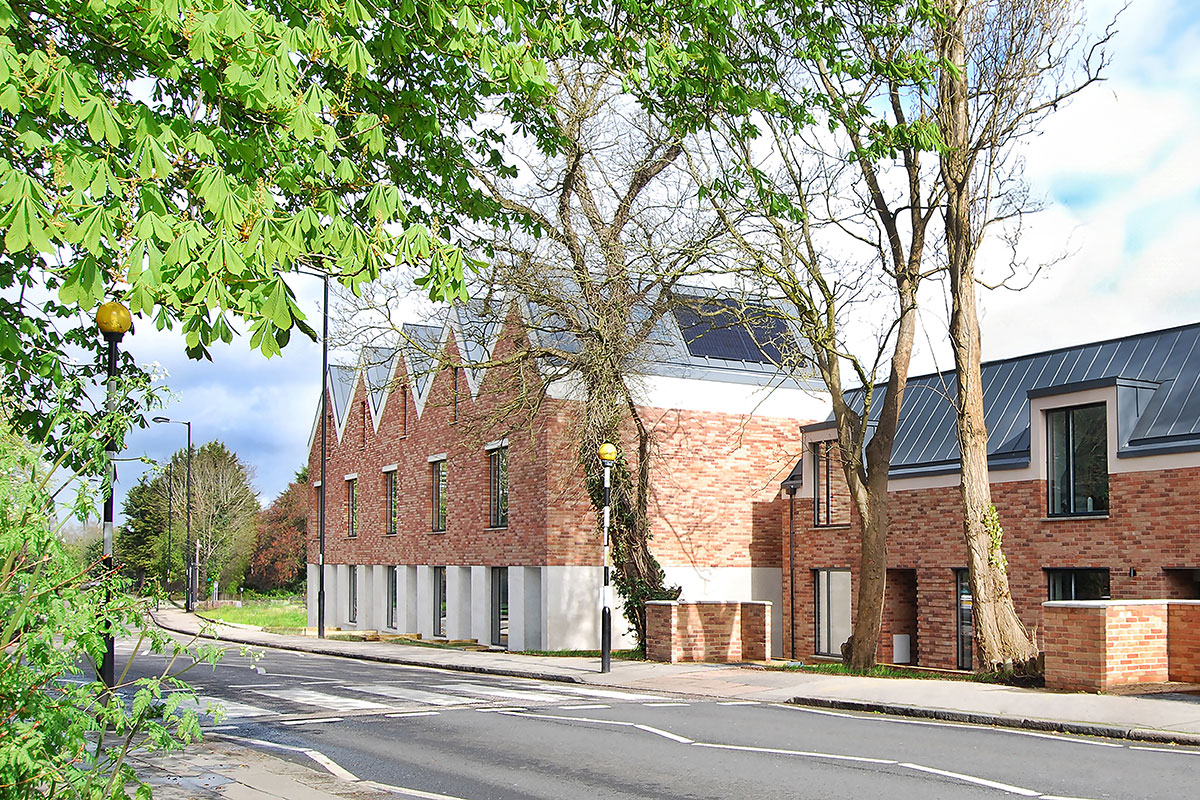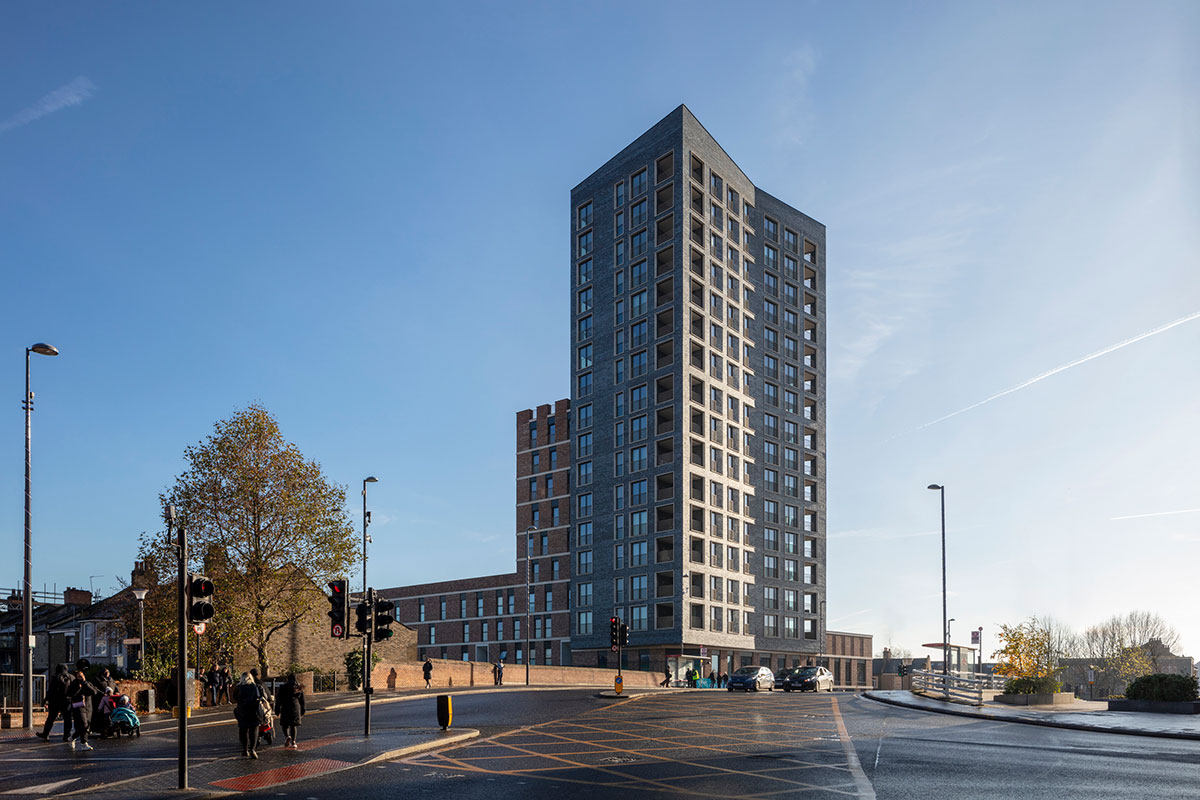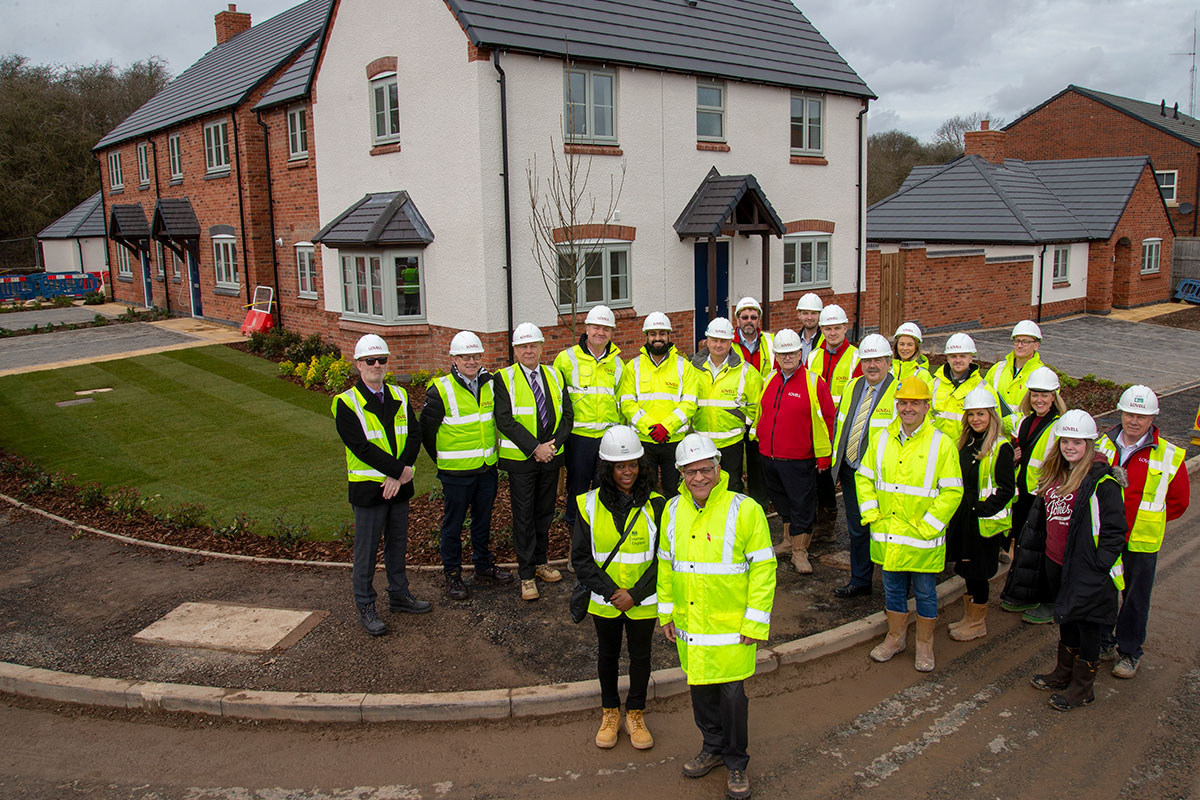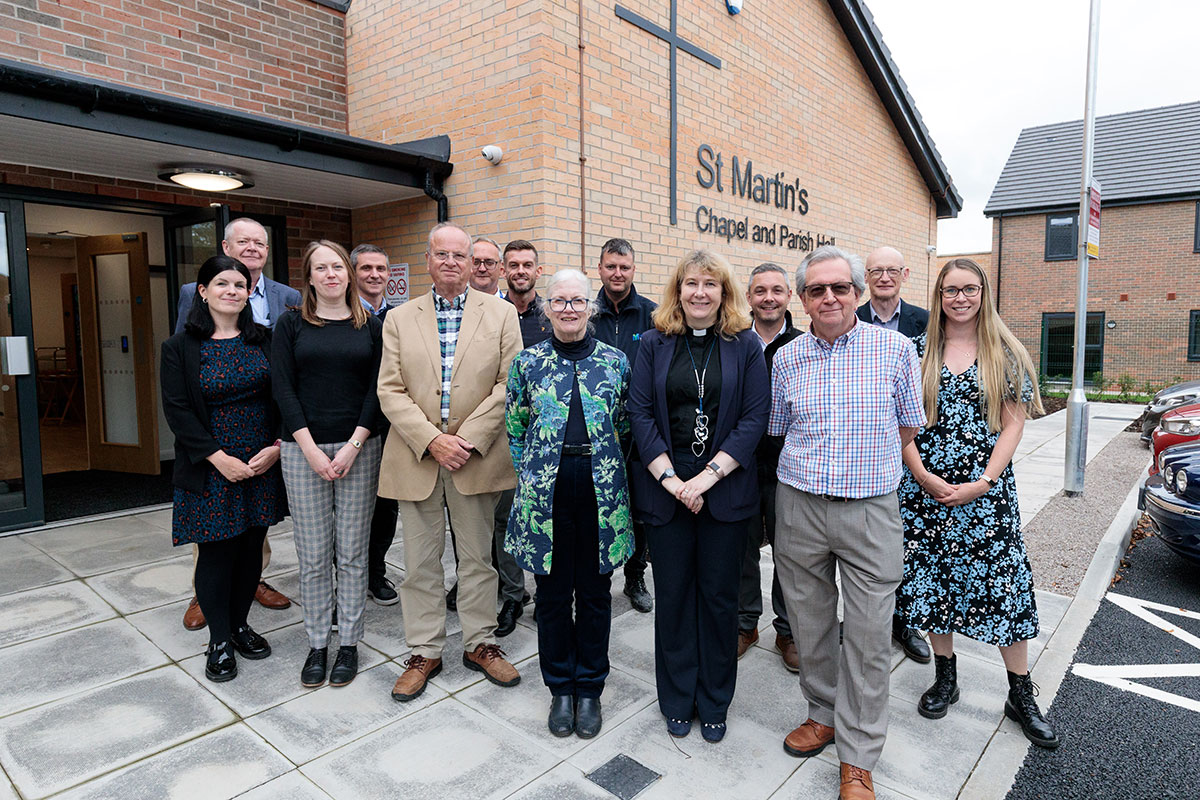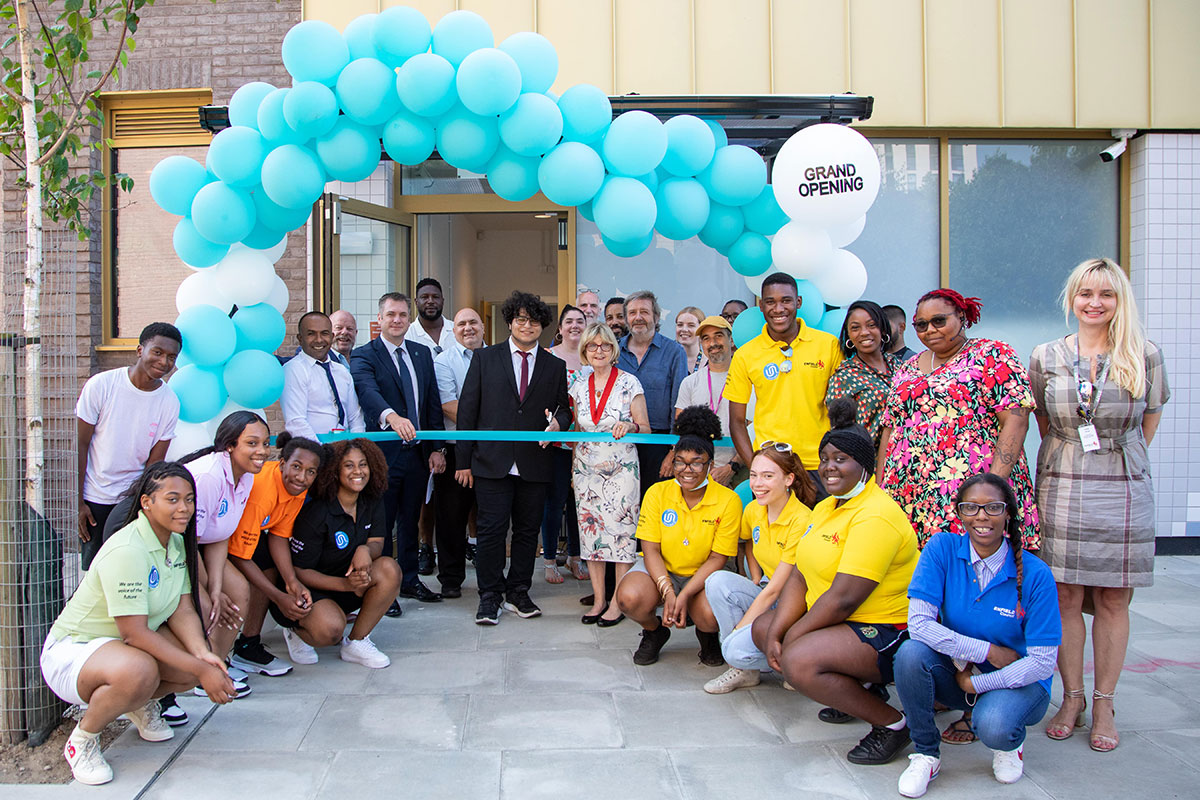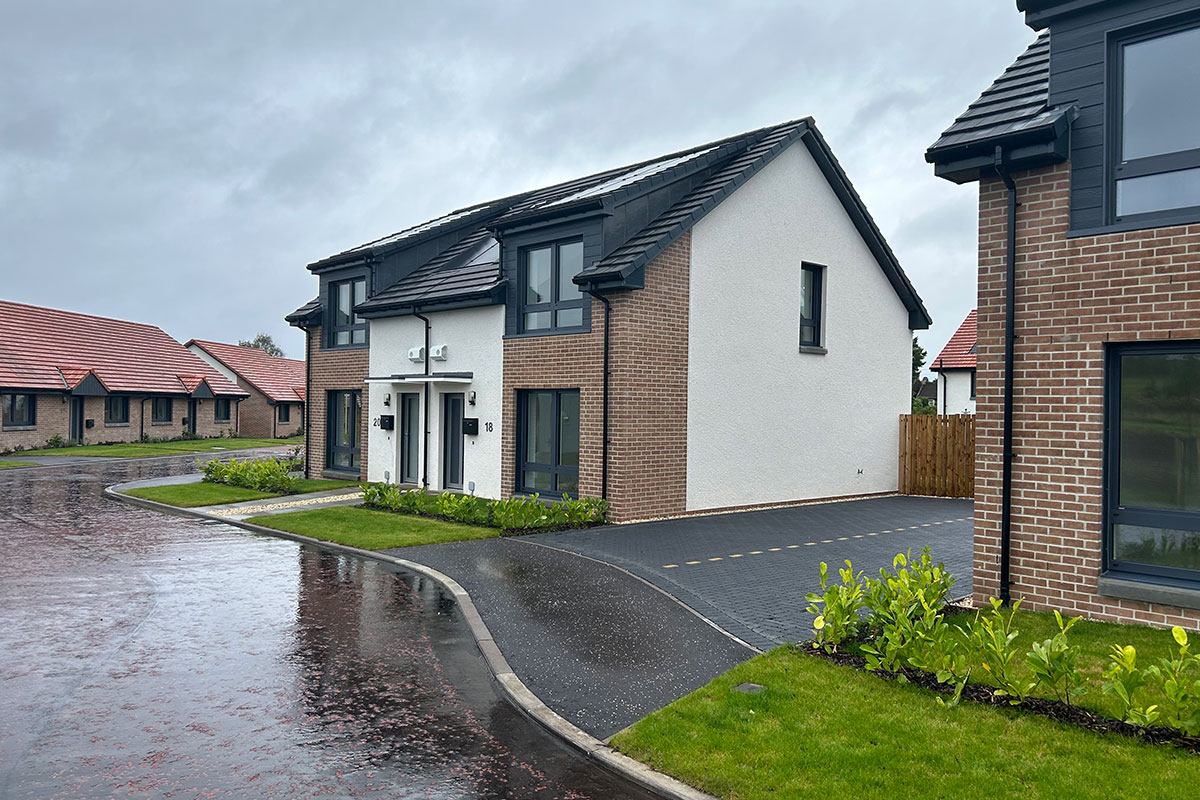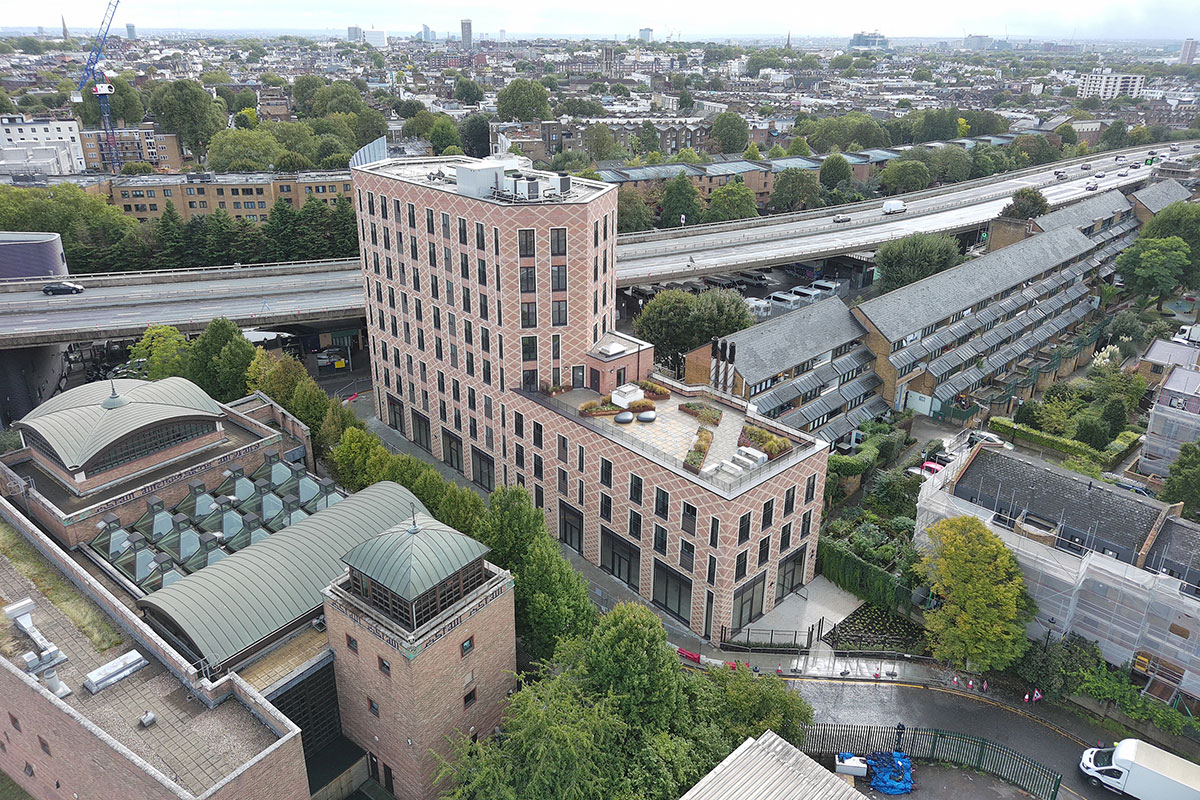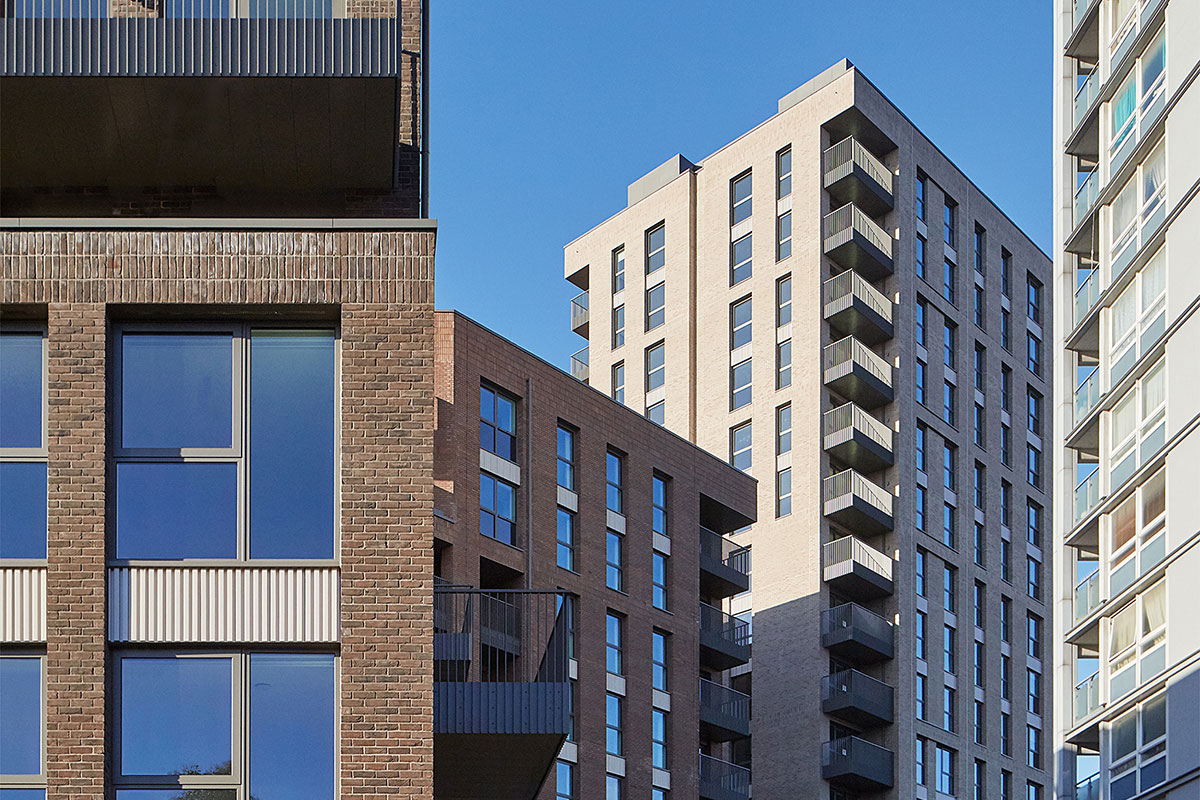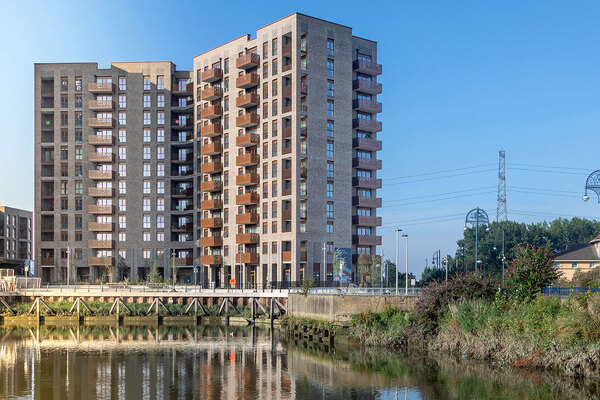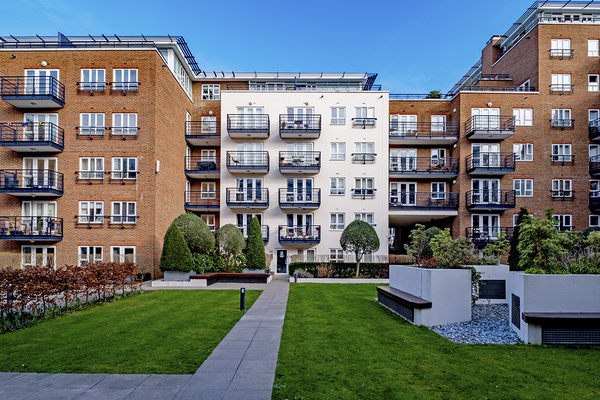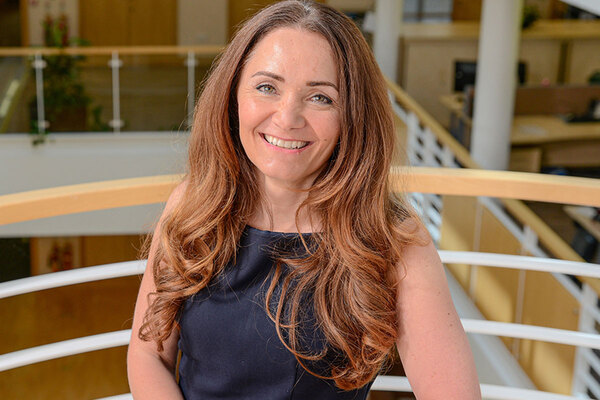You are viewing 1 of your 1 free articles
Inside Housing Development Awards 2024: the winners
Inside Housing reveals the winners of this year’s Inside Housing Development Awards
The Inside Housing Development Awards offer an opportunity to celebrate the very best residential developments across the UK over the past year – and share learning more widely.
In challenging times, the housing sector has proved its resilience, striving towards more sustainable solutions and projects that put the needs of the communities it serves first. The awards recognise the teams, schemes and solutions that have made a positive impact.
There are categories to suit all tenures and for all the key players, including house builders, developers, landlords, architects and sustainability innovators.
Every year, the awards are judged by a panel of industry experts. We pride ourselves on the robustness of our judging process, ensuring all entries are fairly considered and thoroughly reviewed.
Our industry experts review the entries to ultimately decide on the shortlist and winners in a two-step judging process.
A huge congratulations to all our finalists and a big thank you to everyone who entered.
A note from editor Martin Hilditch
Welcome to this year’s Inside Housing Development Awards (IHDAs) – a supplement of all the very best development work in UK housing. The IHDAs are all about shouting about the most amazing work in the sector – and helping others pick up on learning from the teams and organisations working at the top of their games.
Since last year, we’ve had a change of government and this year’s IHDAs came in the same week as the Labour Party Conference. That placed the delivery of new housing high on the agenda, but also came with a reminder that the government is looking to the sector for answers.
Labour’s headline commitment is to deliver 1.5 million new homes, and also to increase the number of social homes built over the course of the parliament. Housing secretary Angela Rayner said this latter figure is what she wants to be judged on at the end of the parliament.
The reason for urgent action is obvious. At the time of last year’s awards ceremony, there were 130,000 children living in temporary accommodation. Today that figure stands at 150,000. I’m proud that our Build Social campaign saw all the main parties acknowledge the importance of delivering new homes over the past year. But this year’s conference indicated there will be no easy solutions – and that innovation in the sector will play a big part. Yes, funding will be important, but partnership was one of the words most used by ministers.
These awards give us the chance to shout about the innovative approaches and partnerships that have driven delivery – and that might act as a model for the future. From supported housing to regeneration schemes, new affordable housing to build-to-rent, there’s fabulous work on show in this special section.
I’d like to end with many thanks to our sponsors and fantastic judges for making these awards possible.
Martin Hilditch, editor, Inside Housing
Best supported housing development – rural/suburban
Eldervale Extra Care Scheme, Wigan – Wigan Council
- Shared facilities of 51 supported housing units for affordable rent have become a community hub
- Extensive glazing connects indoor and outdoor spaces, enhancing well-being
- Thoughtfully designed on a sloping site, accessibility is ensured via lifts, ramps and steps
Eldervale is a development of 51 high-quality and energy-efficient supported housing units for affordable rent, and forms part of the Whitebeam Close regeneration project in Wigan. The scheme features a range of communal areas and extensive landscaped gardens. These facilities have become a hub for life at Eldervale; they offer a range of events and activities, and foster closer working relationships between staff, residents and the community.
The scheme maximises the glazing in the common areas and all the corridors have glazed walls, providing a connection between the inside and outside spaces. This enhances the well-being of residents, while also providing natural light in those areas.
The building and landscaping have been thoughtfully designed to take account of the slope of the site, with a stepped construction over three floors, which are all accessible via central lifts.
The design incorporates a number of plateaus with interconnecting steps and ramps to ensure that all areas of the site are accessible, while also creating interesting spaces for social and community interaction.
The judges said:
“A worthy winner that demonstrates outstanding design. We liked the strong focus on the needs of residents and the fact that the scheme is highly sustainable”
This category was judged by:
Robbie Erbmann, assistant director for housing, Haringey Council
Rob Wall, assistant director of sustainability, British Property Federation
Best supported housing development – urban
Appleby Blue Almshouse, London – United St Saviour’s Charity
- A development of 57 supported housing units in a modern reimagining of an almshouse
- Dual-aspect flats provide natural light and ventilation, arranged around a garden courtyard
- Shared spaces are designed to encourage social interaction and combat loneliness
Appleby Blue is a development of 57 supported housing units for social rent in Bermondsey in London. Designed by Witherford Watson Mann Architects for local charity United St Saviour’s, this project reimagines the notion of an almshouse, turning it into a cornerstone of community in the heart of the local area.
Appleby Blue has been meticulously designed to meet the specific needs of its 65 residents. The units include spacious one- and two-bedroom apartments, 11 of which are wheelchair accessible. Each flat is dual aspect, ensuring natural light and ventilation, which are crucial for the well-being of older people.
The layout encourages residents to engage with each other and the community, with all apartments arranged around a garden courtyard.
At the core of the design is a community kitchen and other shared spaces that act as hubs for social interaction and activity. These areas host a range of programmes, from nutrition workshops to digital skills training.
This not only combats loneliness and isolation, but also fosters a strong and supportive community network.
The judges said:
“A project thoughtfully composed, woven into the urban environment, speaking of community, place, landscape and third-age homes that are beautifully crafted and joyful”
This category was judged by:
Laura Henderson, managing director, Wheatley Homes East and Loretto Housing
Tom Reynolds, interim director for the environment, Gravesham Borough Council
Best shared ownership development
Regent Place, London – Gateway Housing Association
- The scheme comprises 32 shared ownership homes in Bow, arranged around a large courtyard garden
- The development blends modern, energy-efficient designs with Victorian-style exteriors
- Sixty per cent of homes are for local residents, highlighting the need this scheme addresses
Regent Place is a development of 32 shared ownership homes in Bow, east London, that features a mix of one, two and three-bedroom flats and three-bedroom duplexes. Built on the site of an outdated sheltered accommodation block, whose residents had moved to a refurbished scheme nearby, Regent Place is a collaboration between Gateway Housing Association and Fraser Brown MacKenna Architects.
Historically sympathetic exteriors were designed for the scheme’s two blocks, which are adjacent to the Medway Conservation Area. Its design reflects the distinctive character of the surrounding Victorian architecture, with arched entrances, brown bricks and tall windows all carefully incorporated. The properties’ open-plan, light-filled designs have been built to cater to a range of lifestyles, and with energy efficiency in mind. They are arranged around a large central courtyard garden, which includes a play space for children.
All homes at Regent Place are now reserved, with 60% secured by households living or working in Tower Hamlets – a testament to the need for high-quality, affordable housing in this part of London.
The judges said:
“Regent Place is a really joyful scheme that has a strong sense of place, and which is defined by an unusual and attractive palette of materials and detailing”
This category was judged by:
Melissa Dowler, director, Bell Phillips Architects
Jacqueline Esimaje-Heath, growth director, L&Q
Penelope Storr, head of development and growth, ClwydAlyn
Sponsored by:
![]()
Best healthy homes development – rural/suburban
Whitebeam Close, Wigan – Wigan Council
- This project transformed a disused site into 69 accessible homes at affordable rents
- It offers a range of housing: from care flats, to bungalows for older, disabled and vulnerable residents
- The scheme is designed to promote well-being, and supports residents in downsizing or relocating
Whitebeam Close is the culmination of a long-term regeneration project, which has transformed obsolete and problematic homes, a vacant garage site and underutilised scrubland into 69 beautiful and accessible properties, all for affordable rent.
This scheme, which has been sensitively designed to suit its location, was born from a desire to revitalise the area, and to provide a more diverse mix of affordable homes that would cater to the needs of older, disabled and vulnerable residents. Adding extra-care apartments and general needs bungalows to an estate of predominantly two and three-bedroom family homes has allowed residents to downsize or, for older residents, to relocate closer to their families.
As well as improving the quality and diversity of housing types in the local area, the scheme also incorporates communal facilities which are open to all residents – including a new hub promoting health and well-being for the community.
Feedback from residents and staff has been extremely positive, and a recent residents’ survey returned an overall satisfaction rate of 100%.
The judges said:
“Every home meets very specific needs for older and less physically able residents – a type of scheme which is typically very challenging in terms of financial viability”
This category was judged by:
Adunni Adams, lead senior project manager, Ealing Council
Suzanne Benson, partner, head of real estate, Trowers & Hamlins
Phil Jenkins, executive director of development, Peabody
Sponsored by:
![]()
Best healthy homes development – urban
Daventry House, London – Mæ
- This 60-unit sheltered housing project is designed to facilitate healthy living for older people
- It emphasises sustainability, active lifestyles and keeping residents socially engaged in the community
- The design includes communal spaces and a roof terrace to reduce social isolation
Daventry House is a sheltered housing scheme of 60 social homes – 59 for social rent, plus one flat set aside for the site’s manager – developed by Westminster City Council in London. Designed by architects Mæ, it adopts a holistic approach to healthy homes by considering active lifestyles, careful selection of materials, biodiversity net gain, long-term sustainable design strategies and economic growth for the local community.
The design enables residents to feel safe and socially engaged in their community. The building has been protected against future shifts in the climate, and uses low-energy systems to maintain residents’ comfort. Each unit was built to Lifetime Homes standards (criteria intended to make homes easily adaptable for lifetime use at minimal cost) and 10 properties are wheelchair accessible.
The design was developed through close consultation with resident groups, and these workshops provided insight into the design of the shared spaces which are integral to the scheme. Communal spaces and a generous roof terrace provide opportunities for both deliberate and incidental encounters between residents to overcome social isolation.
The judges said:
“[This] is a wonderful example of a sheltered housing scheme. It brings older people into the community, while helping to address a housing need that has been overlooked for too long”
This category was judged by:
Yemí Aládérun, head of development for Meridian Water, Enfield Council
Brian Berry, chief executive, Federation of Master Builders
Sandy Livingstone, executive director of property, Onward Homes
Sponsored by:
![]()
Best development team – rural/suburban
Sempra Homes team – Basildon Borough Council
- Sempra Homes, a commercial arm of Basildon Council, plans to deliver 1,700 new homes by 2030
- With 324 affordable homes completed and 226 under way, it is tackling huge local housing demand
- The team attributes its success to strong partnerships with the public, private and third sectors
Sempra Homes was formed in 2016 as a commercial arm of Basildon Borough Council, and is set to deliver 1,700 new homes by 2030.
With 324 affordable homes already completed and 226 currently on site, the record of the Sempra team shows resilience and dedication to delivering new homes under the pressure of today’s market conditions.
There is a huge demand for affordable housing in Basildon, with 3,013 households on the housing register and a further 700 in temporary accommodation. The Sempra team is on the frontline of tackling this challenge, having delivered 173 homes for social rent over the past three years – and they are able to balance this with the council’s commercial interests.
Sempra says one of the secrets to its success is its community engagement with local services, ward councillors and residents.
The team is also adept at building strong partnerships with everyone from private house builders to local charities and public sector funding organisations.
The judges said:
“A small, public-led partnership team demonstrates it can deliver an ambitious mixed-tenure programme by harnessing skills from technical experts, analysts and sales specialists”
This category was judged by:
Adunni Adams, lead senior project manager, Ealing Council
Shahi Islam, director of affordable housing, Homes England
Amena Matin, head of regeneration and growth, Enfield Council
Sponsored by:
![]()
Best development team – urban
New supply team – North Lanarkshire Council
- This team is delivering on North Lanarkshire’s ambition to build 5,000 new homes by 2035
- It engages local stakeholders and residents to ensure its new homes meet community needs
- Its focus on modern sustainability measures to reduce fuel poverty has cut some residents’ bills by 50%
Since North Lanarkshire Council set itself a target of building 5,000 new homes by 2035, its new supply team has consistently surpassed expectations. To date, 1,263 new build homes have been completed, with 335 new affordable homes delivered in the record-breaking year of 2023-24.
Through consultation with local stakeholders and residents, the team ensures that every development aligns with the needs of the community – and it prioritises sustainability.
The council’s tenants have traditionally relied on fossil fuels for heating, with off-grid properties facing high electricity costs for storage heating. To address climate change and fuel poverty, the team led initiatives to decarbonise heating systems and promote energy efficiency by installing air source heat pumps in every new build, alongside solar panels coupled with battery back-up.
North Lanarkshire Council is the first local authority in Scotland to install this technology. Early results indicate a 50% reduction in residents’ fuel bills, highlighting the benefits of modern, sustainable housing solutions and setting a benchmark for other councils.
The judges said:
“We were impressed with the team’s commitment to delivering high-quality housing to improve residents’ quality of life and promote social inclusion”
This category was judged by:
Jenny Buterchi, partner, PRP Architects
Ellen Vernon, programme director, One Public Estate
Highly commended
Cambridge Investment Partnership
Sponsored by:
![]()
Best build-to-rent development
Eyewitness Works, Sheffield – Capital & Centric
- Eyewitness is made up of 97 homes across two restored Grade II-listed cutlery works and a new building
- It emphasises sustainability, with green courtyards, a living wall and electric vehicle charging
- Heritage features were restored, preserving Sheffield’s history and reducing embodied carbon
Eyewitness is a build-to-rent development of 97 homes across three buildings: two Grade II-listed cutlery works and an industrial-style new build. Designed to be a self-contained community, Eyewitness has three green courtyards at its core and a residents’ lounge with private dining and a co-working space, with a social calendar in operation to help bring people together.
Sustainability is at the heart of this development; as well as increasing biodiversity via the courtyards’ green spaces, the scheme also features a huge six-storey living wall for an extra injection of verdancy.
Each of the parking spaces has an electric vehicle charging point, while solar panels on the new building power communal areas.
Celebrating this site’s history was a key consideration. Where possible, developer and landlord Capital & Centric used as much of the existing property and materials as it could, painstakingly restoring heritage features, including original windows, fireplaces and safes, as well as the bones of the buildings. This enabled Capital & Centric to save a significant amount of embodied carbon and preserve a piece of Sheffield’s history for future generations.
The judges said:
“A creative re-use of a Grade II-listed industrial building. Reuse of existing features, as well as integrating new sustainability elements, make this a high-quality living environment”
This category was judged by:
Jacqueline Esimaje-Heath, growth director, L&Q
Sandy Livingstone, executive director of property, Onward Homes
Highly commended
Samlet Road, Castell Group
Sponsored by:
![]()
Best regeneration project – 0-100 homes
Sale West Estate, Trafford – Seddon and Irwell Valley Homes
- This project is delivering 79 new social rent homes and 22 homes for affordable rent
- The properties include ‘adaptable-ready’ apartments – a type of home in very short supply locally
- The scheme provides local training opportunities, apprenticeships and youth engagement programmes
With its first phase complete, the regeneration of the Sale West Estate for landlord Irwell Valley Homes by house builder Seddon is delivering on its mission to enable local people to live well in their homes and community. The first phase comprises 79 new homes for social rent, alongside a raft of improvements to the estate environment, as well as opportunities and support for local people.
Phase two is under way; this will deliver 22 homes for affordable rent. These include ‘adaptable-ready’ apartments with features like level access, wider doorways and corridors and wetrooms – a type of accommodation that is in very short supply in the area. The homes all have green features, including electric heating, water-saving technology and electric vehicle charging points.
As well as improving the look of the area, the scheme is helping to tackle issues such as the high number of people without qualifications – 33% locally have no educational qualifications, compared with 25% regionally – through training opportunities, apprenticeships, a youth engagement programme and work experience opportunities for those interested in a career in construction.
The judges said:
“A fantastic example of what can be achieved with a holistic approach to regeneration, and a scheme that benefits the existing community as much as future residents”
This category was judged by:
Nicky Bowling, director of property development, HARP
Melissa Dowler, director, Bell Phillips Architects
Manisha Patel, director, MDA Consulting
Highly commended
The Parks, Stolon Studio
Best regeneration project – 100+ homes
KeithShaw House and Donna Mews, Clapham Park, London – MTVH
- This phase of the Clapham Park regeneration provides 41 new social homes for current tenants
- New homes are highly insulated, with green or solar roofs, and use a sustainable district heat network
- The scheme promotes safety through design, adds a market square and provides local jobs
This latest phase of Metropolitan Thames Valley’s (MTVH) regeneration of the Clapham Park Estate in Lambeth includes shops, open space, a play area, a 41-home apartment block and nine townhouses, each named after local regeneration pioneers. Keith Shaw was a Windrush migrant who helped establish the Metropolitan Coloured People’s Housing Association, a forerunner of MTVH, while Donna Henry began campaigning to improve the estate in the 1990s.
The homes are for current Clapham Park Estate social tenants, whose previous substandard accommodation will be demolished and replaced. The new homes are highly insulated, heated by a sustainable district heat network and have green or solar roofs. Video door entry systems and frontages that encourage passive surveillance at street level help create an area where people feel safe and anti-social behaviour and vandalism are designed out.
The development also features a new market square and retail offerings,vtree-lined avenues and improved pedestrian and cycle links. At least a quarter of the jobs created through construction will go to Lambeth residents.
The judges said:
“The community has been at the heart of this project – giving existing tenants safe, warm, new homes at the same price as their old one, while creating a new sustainable community”
This category was judged by:
Lucy Cheetham, development manager, South Lakes Housing
Robbie Erbmann, assistant director for housing, Haringey Council
Rich Pillar, managing director, Pillar Land Securities
Best development – up to three storeys
Hermitage Mews, Croydon – Gbolade Design Studio
- This is a net zero scheme of eight terraced and semi-detached homes on a topographically complex plot
- Environmental features include air source heat pumps, solar panels and green roofs
- Designed for future adaptability, the homes include flexible spaces and smart building technology
Conceived as a response to net zero targets, this eight-home scheme by London-based architects Gbolade Design Studio features three and four-bedroom terraced and semi-detached homes, all for market sale, on a narrow and sloping plot. The almost two-metre drop from front to rear was addressed by incorporating split levels within the homes, increasing room heights in living and dining areas, and introducing light wells and double-height spaces.
The homes are built around a timber structure with wood-fibre insulation. Heating is provided by air source heat pumps, complemented by solar panels and a robust ventilation strategy, ensuring low energy use and occupant comfort. Green roofs enhance the project’s environmental commitment, contributing to the local wildlife with features such as hedgehog corridors and birdhouses.
Hermitage Mews is designed with the future in mind, with adaptable spaces. Service ducts allow for modification of essential systems, and smart building technology adapts energy use to occupancy patterns. Water conservation measures such as low-flow taps and showers ensure the homes will remain viable under future energy standards.
The judges said:
“We were impressed by the response to a linear-shaped site. The elevational treatment is well considered, complemented by simple landscape design and well-executed detailing”
This category was judged by:
Jenny Buterchi, partner, PRP Architects
Amena Matin, head of regeneration and growth, Enfield Council
Tom Reynolds, interim director for the environment, Gravesham Borough Council
Best development – 4+ storeys
Juniper House, Walthamstow, London – Pollard Thomas Edwards, Hill and London Borough of Waltham Forest
- Juniper House is a 16-storey tower containing 91 homes, more than half of which are affordable
- It combines the new homes with a nursery for 50 children and a university campus
- Despite COVID-19, material costs and fire safety upgrades, careful management kept it on budget
Juniper House is a 16-storey tower in Walthamstow, London. It combines 91 new homes, half of which are affordable – 23 for social rent and 18 for shared ownership – with a nursery for 50 children and a University of Portsmouth campus. It was designed by architect Pollard Thomas Edwards for Hill and the London Borough of Waltham Forest.
Besides the campus, Juniper House offers educational facilities and social spaces, and integrates seamlessly into the community via a pocket park. The result is even more impressive when its difficult development circumstances are considered.
The scheme was designed and progressed with dynamic cost and project management from Waltham Forest Council to safeguard value for money. The council guided the project’s passage through COVID-19 shutdowns, increases in the cost of materials, labour shortages and the full adoption of non-combustible facades, sprinkler systems and advanced fire protection measures – all within budget.
Far more than just another brick-clad residential tower, Juniper House is a testament to the possibilities of carefully thought through urban regeneration.
The judges said:
“Juniper House maximised the development potential of a challenging site sandwiched between a railway line and a row of houses. A great model for lifting young people’s aspirations”
This category was judged by:
Irene McFarlane, chief executive, Linthouse Housing Association
Arita Morris, director, Child Graddon Lewis Architects
Manisha Patel, director, MDA Consulting
Best development – mixed
The Villers, Leicestershire – EMH
- A 77-home mixed-tenure project on a former contaminated site of historical significance
- The design and detailing were inspired by the history of the site and local architectural vernacular
- The development includes 23 house types, all of which are designed to be tenure-blind
The Villiers is a 77-home development in the Leicestershire village of Whetstone, built on previously contaminated land consisting of derelict industrial buildings and overgrown vegetation. It comprises 29 homes for social rent, 38 for shared ownership and 11 supported living apartments that offer round-the-clock care for people with complex needs.
The site has historical significance. Sir Frank Whittle, the inventor of the jet engine, had a factory here and it later became an important centre for the nuclear industry and computer research.
The design was inspired by the site’s history and the local vernacular. Elements of industrial Victorian architecture were incorporated by designing homes resembling old mews houses and railway cottages, while traditional materials like local red brick and textured render, alongside details such as chimneys and angled brick sills, evoke the feel of older cottages in the area.
The scheme – which has 23 house types – is designed so that there is no visible difference between tenures, underlining the ambition of developing housing association EMH to build high-quality, tenure-blind communities.
The judges said:
“A great development that is clearly popular with residents and the community, and which raised the bar for design locally by drawing inspiration from the area and its history”
This category was judged by:
Rich Pillar, managing director, Pillar Land Securities
Penelope Storr, head of development and growth, ClwydAlyn
Rob Wall, assistant director of sustainability, British Property Federation
Best partnership – 0-100 homes
St Martins, Preston, Lancashire – Regenda
- A partnership-driven project delivering 14 Rent to Buy homes, a new chapel and a parish hall
- Every part of the scheme was designed by the same architect, ensuring a cohesive look and feel
- The chapel and parish hall are already being used by worshippers and community groups
St Martin’s is a collaborative development between Regenda, M&Y Maintenance and Construction, and Parish Church Council of Broughton, to deliver 14 new Rent to Buy homes – five houses and nine apartments – as well as an energy-efficient new build chapel and parish hall in Fulwood, a suburb of Preston.
Both Regenda and the church council had identified that there was a lack of housing in the area for those on lower incomes; large house builders’ developments offered little in the way of quality low-cost homeownership opportunities.
The church council sold surplus land around the parish hall to Regenda for the construction of St Martin’s. The chapel, parish hall and new homes were designed by the same architect, ensuring a cohesive look. Energy efficiency was a high priority, and through the use of air source heat pumps and a fabric-first approach to building, all properties achieved an Energy Performance Certificate rating of Band C and above.
The scheme’s communal facilities are already part of the community: the chapel hosts weekly services, while the parish hall is used by a range of local groups.
The judges said:
“This project demonstrates real creativity in using community engagement to support the scheme. It provides an excellent example of partnership working to deliver social value”
This category was judged by:
Suzanne Benson, partner, head of real estate, Trowers & Hamlins
Nicky Bowling, director of property development, HARP
Irene McFarlane, chief executive, Linthouse Housing Association
Sponsored by:
![]()
Best partnership – 100+ homes
Alma Estate regeneration, London – Enfield Council and Countryside
- This £425m project is transforming a formerly deprived estate into a successful community
- The scheme has delivered 40% affordable housing, a new family hub and community centre
- It benefited from the partnership’s adaptable and people-centric approach to design and delivery
Rising interest rates and inflationary pressures have created a difficult climate for increasing housing supply, but with the £425m transformation of the post-war Alma Estate in Ponders End, Enfield Council and Countryside Partnerships demonstrate how a public-private partnership can adapt, innovate and deliver.
This scheme will deliver 1,086 new mixed-tenure homes, 40% of which will be for social rent or shared ownership. The project will also provide more than 6,000 sq ft of new community facilities, including a £2.1m family hub and community centre.
This partnership is rooted in a people-led approach to design and delivery with a social conscience. It has accelerated the provision of affordable housing, in order to decant or rehouse council tenants earlier at a time when new, well-heated homes are desperately needed.
With 459 homes now completed, the area has already been transformed from a previously deprived estate containing poor-quality high-rise tower blocks, into a successful, sustainable, mixed community, which is reflected in increasing house prices and saleability.
The judges said:
“An exemplary model of how a local authority can work with the private sector on a sustainable high-quality regeneration project, with emphasis on the resident voice”
This category was judged by:
Brian Berry, chief executive, Federation of Master Builders
Lucy Cheetham, development manager, South Lakes Housing
Arita Morris, director, Child Graddon Lewis Architects
Sponsored by:
![]()
Best affordable housing development – less than £5m
Hook Norton Community Land Trust, Oxfordshire – Soha Housing
- These Passivhaus standard, affordable rent homes are powered using renewable energy
- The scheme has been designed to promote intergenerational living and to foster community support
- The homes will remain affordable in perpetuity, with priority given to people from the local area
Hook Norton Community Land Trust has been working since 2019 to build much-needed affordable housing in the Oxfordshire village from which it takes its name. The project has delivered 12 net zero carbon homes, all built to Passivhaus standards; eight have been bought by 7,000-home social landlord Soha.
These homes and flats, all for affordable rent, use solar panels and a microgrid system for locally generated energy, aiming to foster energy independence and environmental responsibility. The site also incorporates electric vehicle charging points, a shared car club and an electric bike hire scheme.
The layout and design of the homes are the product of extensive community consultation. A shared vision emerged, advocating for intergenerational living, communal gardens and allotments to foster neighbourly support and reduce isolation. Central to this vision is a community building that serves as a hub for shared activities. It also offers extra space for visiting family and friends.
Thanks to the community land trust model, the homes will be kept affordable in perpetuity, prioritised for people from the area, and will not be sold on the open market.
The judges said:
“This scheme exemplifies how to address affordable housing need. Its focus on community involvement, environmental sustainability and social cohesion sets a high standard”
This category was judged by:
Adunni Adams, lead senior project manager, Ealing Council
Yemí Aládérun, head of development, Meridian Water, Enfield Council
Suzanne Benson, partner, head of real estate, Trowers & Hamlins
Sponsored by:

Best affordable housing development – less than £10m
Balgove Road, Gauldry, Scotland – Kingdom Housing Association
- Kingdom and Campion delivered 30 much-needed energy-efficient homes for social rent in Fife
- Built to Passivhaus standards, the homes help address fuel poverty and support sustainable living
- Locally sourced materials and recycled products were used in construction wherever possible
Kingdom Housing Association and Campion Homes have delivered a development that brings modern, highly energy-efficient homes to an area of Fife where affordable housing is in great demand.
Integrating with the area and making a positive contemporary contribution to the village, these 30 homes for social rent meet current and future housing needs, while helping to sustain the community by providing organic, yet controlled, growth.
Designed to Passivhaus standards, these properties provide an environmental benefit through low energy usage, but also address fuel poverty through reduced energy costs.
Building materials were sourced locally or from local distributors wherever possible to minimise haulage and its negative impact on the environment. Timber was obtained from sustainable sources, with recycled materials used where possible. Each home has access to superfast broadband, a large enclosed rear garden, plus a communal electric vehicle charger. The scheme as a whole has achieved Police Scotland’s Secured by Design Gold award.
The judges said:
“We were impressed with the variety of accommodation provided, all for social rent. This development emphasises green design and future-proofing of affordable housing”
This category was judged by:
Brian Berry, chief executive, Federation of Master Builders
Nicky Bowling, director of property development, HARP
Lucy Cheetham, development manager, South Lakes Housing
Sponsored by:

Best affordable housing development – less than £20m
Acklam Road, London – Royal Borough of Kensington and Chelsea
- A development of 32 homes (20 for social rent), plus much-needed new community facilities
- Its design was strongly inspired by a neighbouring Muslim community centre, helping it blend in locally
- A great example of how to deliver affordable housing and community facilities on a constrained site
Acklam Road is a development of 32 new homes – 20 for social rent and 12 for market rent – and community facilities by the Royal Borough of Kensington and Chelsea, the developer and landlord of the scheme. These include a nursery space and community kitchen, which will be used to train local people looking for a career in catering.
The development is across the road from the Almanaar Muslim Cultural Heritage Centre, and its distinctive criss-cross brick pattern has been strongly influenced by its neighbour. This helps the new homes to blend into the local street scene, and is key to the building (and, by extension, its new residents) being welcomed as part of the community.
The high cost of living, including rising energy prices, and the increasing need to build more sustainably were key drivers behind the council’s mandate that the building should have enclosed winter gardens and a simple-to-operate air source heating system.
This is a great example of how much can be delivered in an urban area with a high demand for affordable homes and community spaces, but extremely constrained land supply.
The judges said:
“For a relatively small development, much thought has clearly been given to the quality of the building and enjoyment of the residents who will make their homes here”
This category was judged by:
Melissa Dowler, director, Bell Phillips Architects
Robbie Erbmann, assistant director of housing, Haringey Council
Phil Jenkins, executive director for development, Peabody
Sponsored by:

Best affordable housing development – £20m+
300 Harrow Road, London – Child Graddon Lewis
- This 100% affordable, 112-home scheme addresses a local need for family-sized affordable housing
- Environmental benefits include air source heat pumps, green roofs and rainwater harvesting
- The scheme offers £10.2m in social investment and long-term environmental savings
300 Harrow Road is a 100% affordable, 112-home scheme by architects Child Graddon Lewis that helps to meet Westminster’s urgent need for family-sized social housing, while integrating environmental innovations, such as a building-wide air source heat pump system, and community benefits, including a community centre.
Of the properties, 77 are for social rent, while the remainder are available at London Living Rent. The scheme employs a 100% renewable energy strategy using air source heat pumps and photovoltaic systems, reflecting developer Westminster City Council’s commitment to lower carbon-intensity projects. Additional sustainable features include green/brown roofs, cycle storage and rainwater harvesting. Modern methods of construction were central to the development.
By shifting focus from market sales to fully affordable units, 300 Harrow Road demonstrates a sustainable financial model that prioritises social returns, including long-term environmental benefits for residents and the community. It provided a £10.2m social return on investment, which is almost 20% of the project’s value.
The judges said:
“Thoughtful regeneration in a dense city location. These are high-quality, family-centric homes, in a scheme supported by strong local feedback on impact and social value”
This category was judged by:
Laura Henderson, managing director, Wheatley Homes East and Loretto Housing
Shahi Islam, director of affordable housing, Homes England
Sponsored by:

Judges
Adunni Adams
Lead senior project manager, Ealing Council
Yemí Aládérun
Head of development, Meridian Water, Enfield Council
Suzanne Benson
Partner, head of real estate, Trowers & Hamlins
Brian Berry
Chief executive, Federation of Master Builders
Nicky Bowling
Director of property development, HARP
Jenny Buterchi
Partner, Prp Architects
Lucy Cheetham
Development manager, South Lakes Housing
Melissa Dowler
Director, Bell Phillips Architects
Robbie Erbmann
Assistant director for housing, Haringey Council
Jacqueline Esimaje-Heath
Growth director, L&Q
Laura Henderson
Managing director, Wheatley Homes East and Loretto Housing
Shahi Islam
Director of affordable housing, Homes England
Phil Jenkins
Executive director of development Peabody
Sandy Livingstone
Executive director of property, Onward Homes
Amena Matin
Head of regeneration and growth, Enfield Council
Irene McFarlane
Chief executive, Linthouse Housing Association
Arita Morris
Director, Child Graddon Lewis Architects
Manisha Patel
Director, MDA Consulting
Richard Pillar
Managing director, Pillar Land Securities
Tom Reynolds
Interim director for the environment, Gravesham Borough Council
Penelope Storr
Head of development and growth, ClwydAlyn
Ellen Vernon
Programme director, One Public Estate
Rob Wall
Assistant director of sustainability, British Property Federation
Sign up for our daily newsletter
Already have an account? Click here to manage your newsletters

